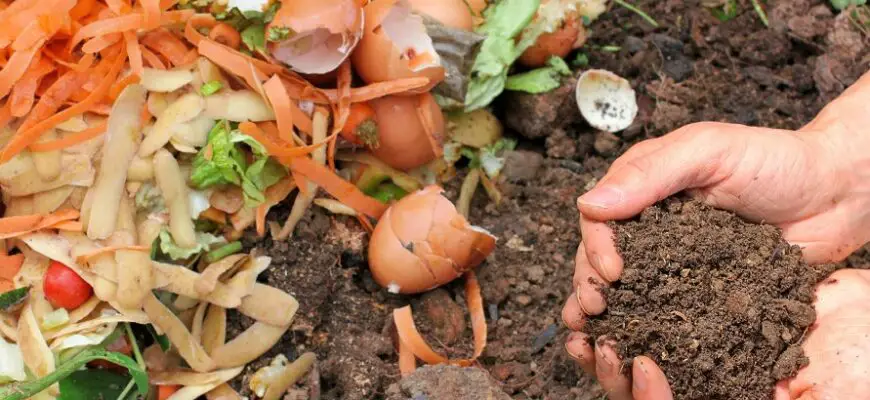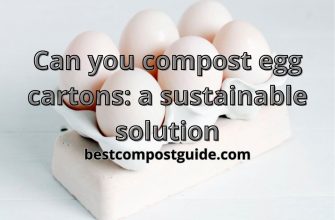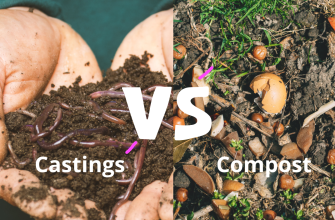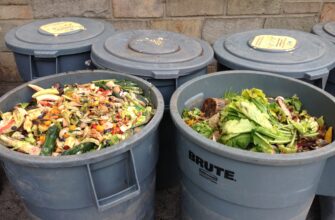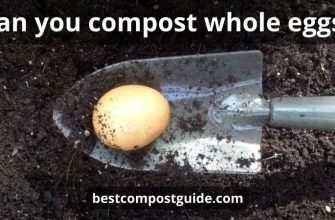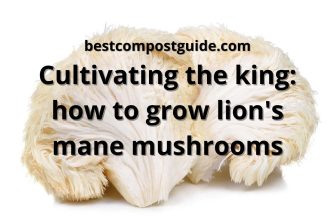A compost pile requires constant turning to speed up the decomposition process and revitalize oxygen-loving microbes living in organic waste. You may use a shovel regularly or a compost tumbler, depending on your preferences or final aim.
Finished compost is ready in a couple of months or a much shorter period. There are different ways to succeed in receiving the most benefit from your compost pile in a shorter period, one method requires constant manual turning, and the other can be done with additional help.
Additional help means supplementing expensive equipment such as compost bins, compost tea brewers, or even compost aerators.
So, to turn your compost avoiding additional expenses and annoying problems, you need some steps to follow. In this article, we outline how, why, and when requires turning your compost pile faster using the finished compost materials, and how to troubleshoot possible annoyances.

- What does composting mean?
- What does turning compost mean?
- Materials needed
- Brown materials
- Green materials
- Tools and other instruments
- Do you need to turn compost?
- Can you turn compost too much?
- How to turn compost in a compost bin?
- Compost tumblers
- Compost aerators
- When to turn your compost piles?
- How to speed up the composition, avoiding problems?
- How often should you turn a compost pile?
- What happens if you don’t turn compost?
- How long should I turn my compost?
- Conclusion
What does composting mean?
Composting is not as difficult a process as it may seem. It is possible when you throw away every organic matter you have at home. They are usually called green and brown materials and can be found in every household.

People usually keep such organic material outside in a compost bin waiting for several months to get a proper fertilizer without any additional affords and expenses.
Primarily, centuries ago people used to do almost the same just throwing all waste into one place, or no, even into one heap, and forgetting about it while decomposition nourished the surrounding soil.
It seems rather natural to get rid of organic waste in such a manner.
Nowadays, we consume more and throw more waste, so for keeping nature alive we should pay some time and affords to receive useful composting materials inside a compost bin.
So, the composting system helps you to decrease your kitchen waste and shorten greenhouse gas emissions, moreover reducing the usage of chemical fertilizers to improve the ecological situation. It has a lot of advantages such as saving money and natural efficiency but definitely requires time, and special knowledge to avoid the possible annoying after-effects.
The common method of composting means keeping your organic matter in a pile or a compost bin and turning compost pile regularly. It is not a complicated task at all after you learn some general information and technique.

What does turning compost mean?
Turning compost means accelerating the aging of a compost mixture by adding more air to let the compost pile breathe. In other words, turning compost leads to aeration that allows living creatures to breathe, live, and function. That is how a compost pile becomes useful manure. This process is also called aerobic action (coming with oxygen flow).
In case the air flow is weak or absent, these helpful microbes die off and decomposition is no more available. Anaerobic action (coming without air) decreases temperature, brings a bad smell, and stops processing.

Materials needed
To succeed and get the most benefit from your organic matter, you need the proper waste, such as brown and green materials.

Brown materials
You can easily find brown materials in any household, they are dried leaves, wood chips, sawdust, newspapers, eggshells, pet hair, plain bread, or other matter made of wood. Brown materials work as carbon in a compost pile.
If you lack these products, you may use simple paper or wood shavings, or take shredded cardboard from any shops near your home.
Or you can always take leaves from the outside.

Green materials
Except for woody, you require green materials. They provide nitrogen into a compost pile. Examples of green materials are animal manure, kitchen scraps, tea bags, paper towels, coffee grounds, moldy bread, fresh leaves, grass clippings, and other garden waste except for weeds and roots.
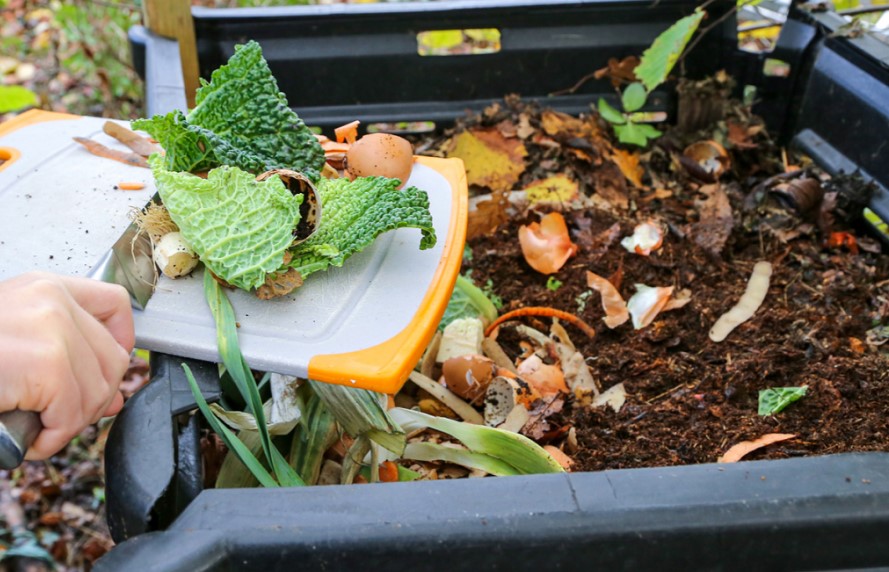
Tools and other instruments
Except for green and brown materials for your compost pile which require water, a sprayed hose will serve the best; a compost thermometer to measure the temperature to know the proper time to turn compost.
A Pitch Fork will be rather useful to turn the compost and break up large clumps if there will be any. Or you may use usual garden tools such as a shovel.
Just use simple garden tools to turn your pile from the bottom layer to the upside.
Depending on the size of your compost pile, you may need much force to turn your compost pile.
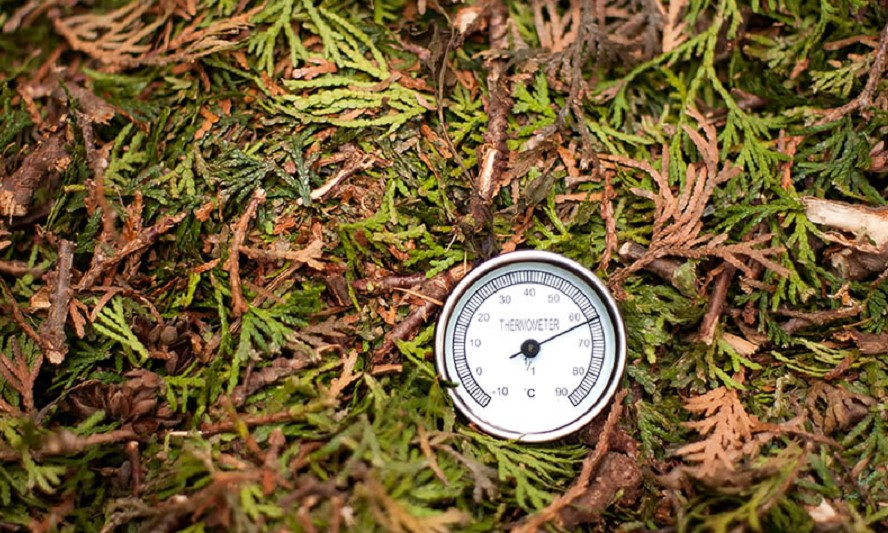
Do you need to turn compost?
The composting process doesn’t happen immediately. Compost may take from 3 weeks to about 3 months depending on several factors such as temperature, the compost contents, and the moisture content in a compost pile. Even without turning the compost pile, organic materials will decompose and become compost.

The biggest problem is turning raw organic materials into your compost pile. It is aerobic (oxygen-like) and has the highest energy and efficiency levels. They’ll die when the oxygen is gone from the compost without oxygen being taken away from them.
With proper air flow the aerobic bacteria will adapt to the aerobic environment in compost – the oxygen-hating process continues. This anaerobic critter can produce unpleasant odors and decrease the decay of compost.

Can you turn compost too much?
Yes, you can. There is no need to turn your compost too often, as it may produce too much moisture content.
Over time, waste compost can damage the moisture level in the compost pile and cause the soil to deteriorate. You can only turn out compost every single day in case of rain. Turned too often may harm microbes and prevent the decay process of compost.
At the same time, when you avoid turning your compost for two or three days, it creates a solid hardly-broken layer. Several problems may appear when any layer doesn’t have oxygen when turning. So, keep in mind that only new waste materials require frequent turning compost, otherwise once in three days is enough in appropriate weather conditions.
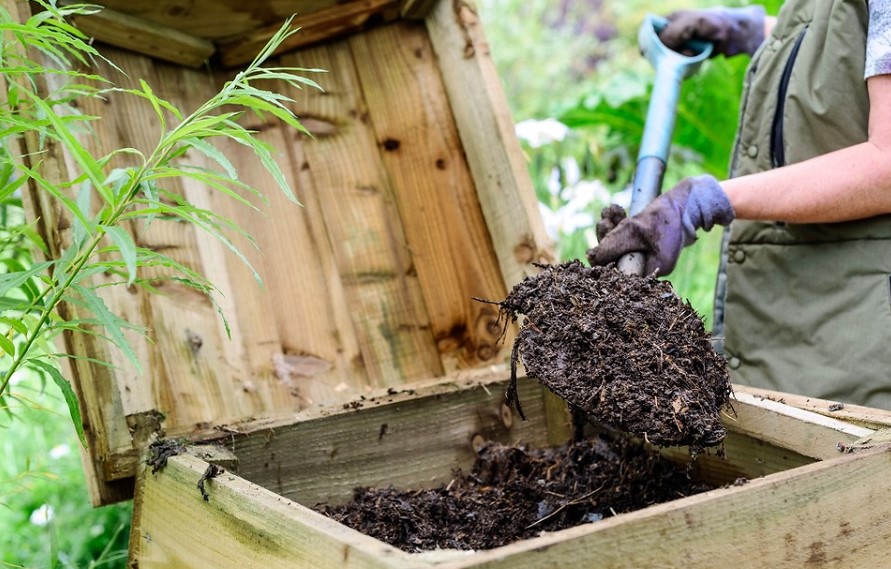
How to turn compost in a compost bin?
Here you may find recommendations on how to turn your waste pile into a compost pile.
One of the old-fashioned and the most common way to turn compost is elbow grease. You turn the materials from the center of the pile to other layers, equally.
The center of the pile has a higher temperature than the outer parts. It means that the central part needs turning and mixing with other parts to spread microorganisms to other layers and parts of the compost pile.
Living useful organisms can also spread over layers of compost if you add new material. Adding new waste, you can throw the material into your compost bin while you shovel everything around it back inside. The compost can easily be mixed while the decomposition process isn’t finished when you add all materials into one bin.
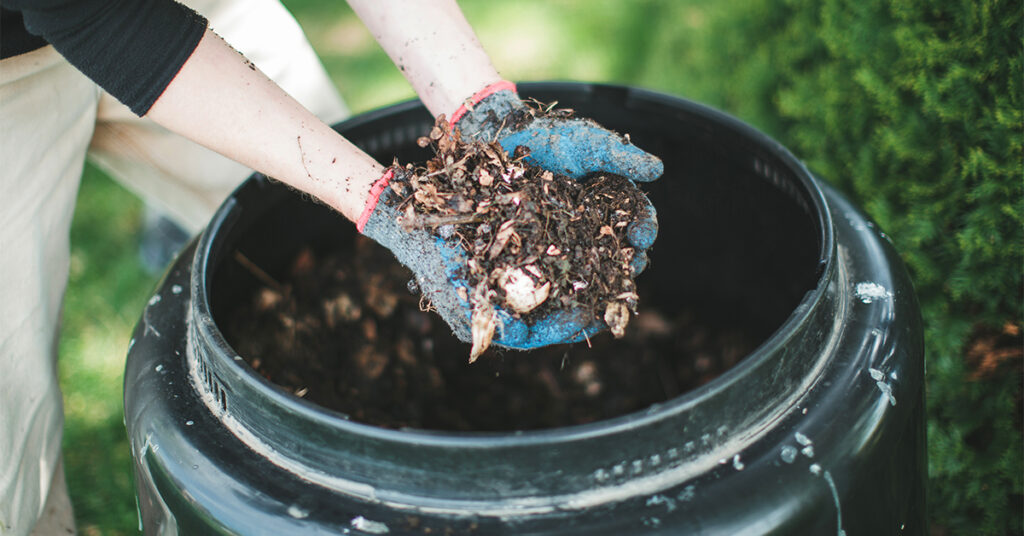
Compost tumblers
Compost can be turned easily on tumblers, thanks to a specially designed crank that twists. Tumblers should be turned twice a week for good decomposition. Changing the tumbler periodically regulates the moisture contained in the compost pile, resulting in fast compost heating.
Turning with a compost tumbler keeps the compost aerating, so it is easy and beneficial for all those creatures that need oxygen.
A composting tumbler is an excellent option for most people because it eliminates using a machine turning compost into mulch.
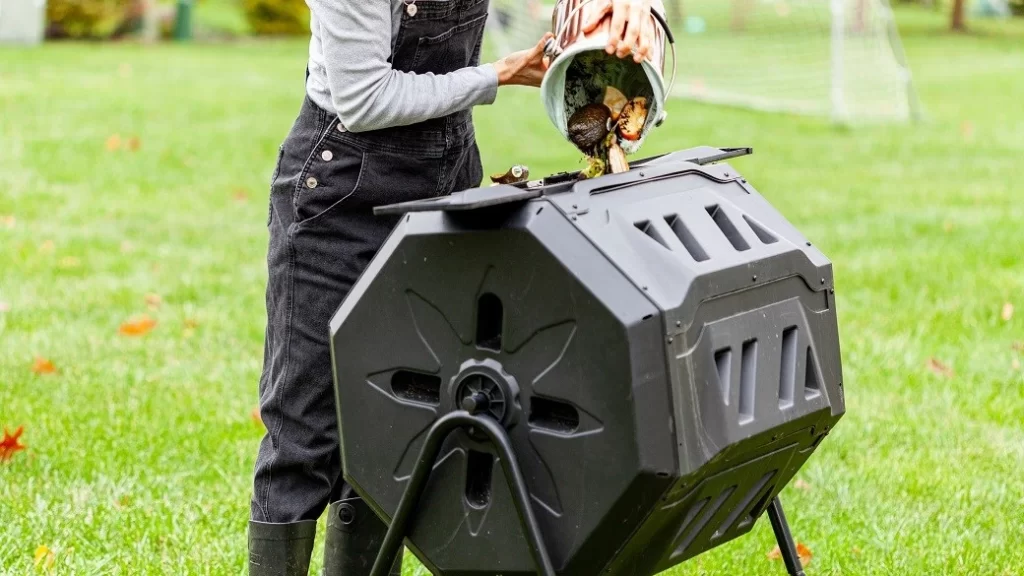
Compost aerators
A compost aerator is a useful device if you keep your compost pile in a closed bin such as a plastic container and have no constant access to turn compost easily.
It is attached directly to the central part of your compost waste and helps to mix all the layers by rotating its ‘wings’. While you pull the aerator in compost, those wings open and turn the compost pile without any additional power.

When to turn your compost piles?
In a few days, the compost bin should have the correct ratio, which should allow the compost pile to reach 100-120 degrees. It is the best time for turning the compost, to redistribute the hot compost from the central part into other cooler layers. Such action allows for keeping the overall heat and moisture in the pile for better and quick decomposition.
The advantage is that you should not start turning the material immediately. Unless your schedule is limited to a couple of weeks, the possibility of keeping this going is limited. The compost temperature will decrease slowly with the biological activity without pile turning.
So, when to turn compost depends on the time you have. After compost cools down, the faster and more frequently you turn the material, the quicker you accelerate the process.

How to speed up the composition, avoiding problems?
Sometimes it may occur that your new pile doesn’t reach the minimal 120-degree heat for several days, and turning doesn’t help. It means that you have problems with the moisture level in your pile.

If there are not enough nitrogen materials, such as a garden or household waste, the pile will be dry. You may add grass clippings to adjust the moisture.
If your compost is too wet, it requires more carbon wooden materials. You may dry your compost by adding wood chips to the pile. Such a problem as a bad smell can also be prevented by adding more carbon materials into compost.
You cannot speed the process if you notice weeds growing out of the pile, you should get rid of them at first. The most efficient and fast way is to use a thermal composting method.
Leave your compost heap for more days until the temperature will increase up to 140-160 F in the pile. In such heat, all weeds growing with seeds will die, burn away, and won’t appear soon.
To achieve such a result, keep turning compost every two or three days. It is called a turnover method and requires much time and effort to kill weeds growing. Anyway, it is worth doing as with weed seeds, you will also kill all inorganic matter such as herbicides and pesticides as they badly influence the health and quality of garden soil.
Not frequent turning leads to compost clumps between layers. It occurs due to a lack of air circulation and can be easily prevented by turning and spreading all composting matter thoroughly.
Troubleshooting the problems in your compost pile doesn’t require additional knowledge, skills, or expenses. Any compost pile requires attention and time. But without regular turning, the process may be long and annoying.

How often should you turn a compost pile?
It was mentioned above that your compost pile requires regular turning, but how regular should it be? It depends on the situation and conditions you have.
Factors that influence the compost are the size of the pile, organic matter, the humidity level, the speed of drying ingredients, and unexpected situations like bad smells or weeds appearing.
When you rotate more often (averaging around once to three months or more each time), you can quickly make compost. Waiting a period of 2 weeks can increase heat and promote bacterial activity in the pile. The average recycling planter turns piles around once or twice a week.

What happens if you don’t turn compost?
Turning requires time and attention to arranging a schedule. So, if you add kitchen scraps to your pile and do not turn it in for several weeks, nothing bad will happen. It will be just a usual compost pile full of organic waste. Without turning, the matter will not be transformed.
It could take 4-6 months – or longer to completely degrade based on conditions and weather. The colder conditions are, the longer it takes to get compost transformed. Turning accelerates the process and adjusts some accelerating factors such as temperature and living creatures in your pile.
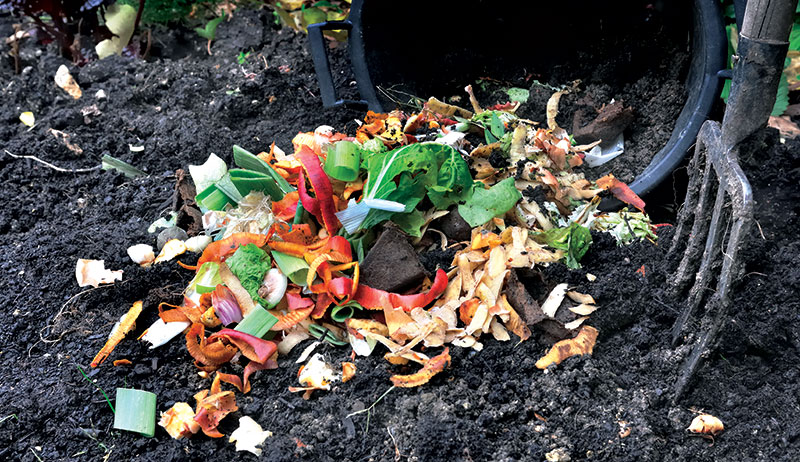
How long should I turn my compost?
In the beginning, your compost pile contains raw materials and if you strictly follow all the necessary conditions, and provide enough air circulation turning compost and your pile is not extremely big. It means you created the best conditions for your compost pile’s microorganisms to thrive. So, the matter will be ready as soon as possible.
Unfortunately, there is no appropriate answer to the question of how long turning should be.
Depending on the size of your compost pile.
The turn of this cycle ensures that oxygen concentrations do not drop too low and will contaminate healthy bacteria. NOP guidelines recommend turning compost at least 5 times in a 15-day interval and keeping temperatures between 131 °F ( 55 °C) and 170 °F (77 °C).

Conclusion
Turning is a relatively simple method of accelerating compost aging but it requires special knowledge to benefit from it, avoiding unexpected problems such as fungi, bad smell, or rotting. We outlined some tips to help you troubleshoot the possible troubles and to speed up the breaking down of the procedure.
Now you know what material is added, what general temperature is required, how long, when, and how often to turn organic matter.
Composting saves money and nature and brings benefits to your garden with its ecologically nourishing soil components, moreover it brings enjoyment to people who are familiar with all the peculiarities. We strongly believe you start storing compost and will succeed in it.

